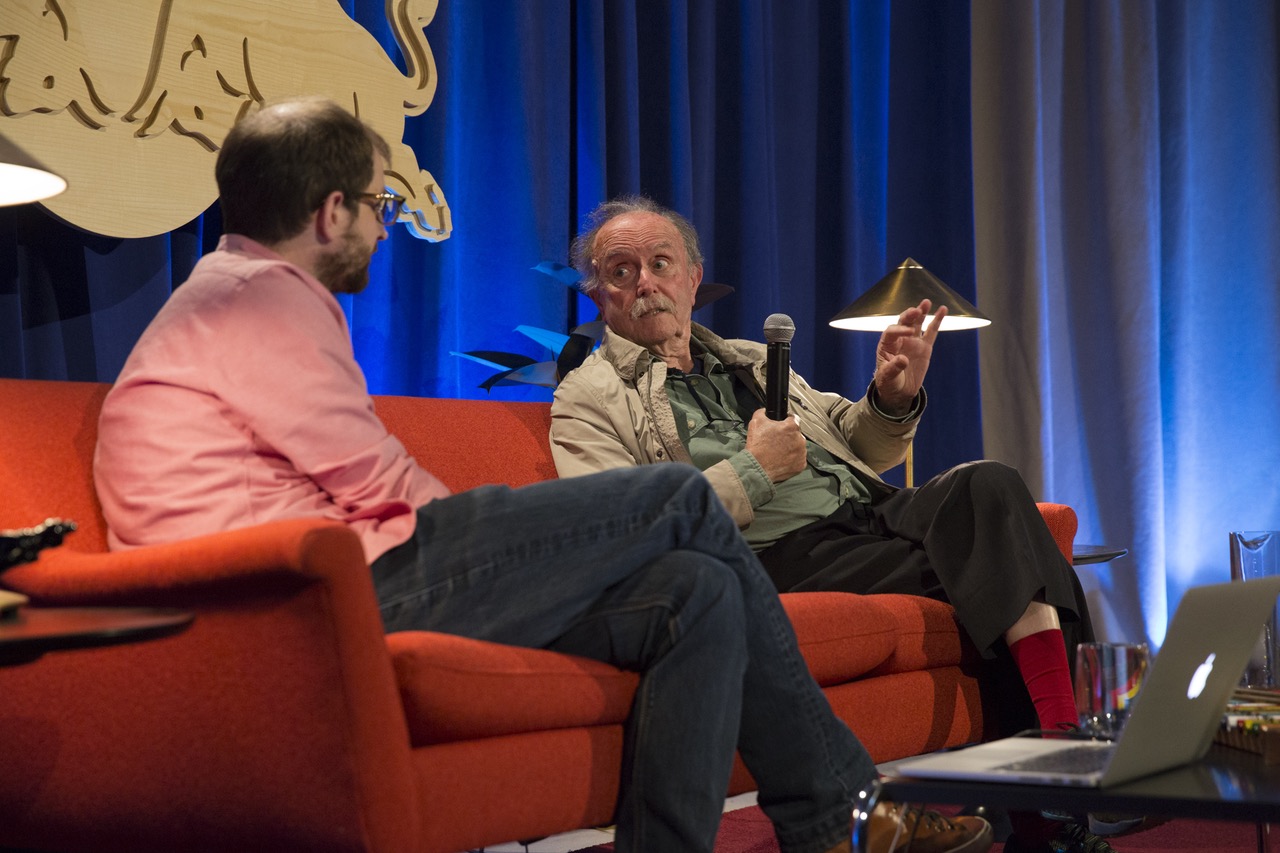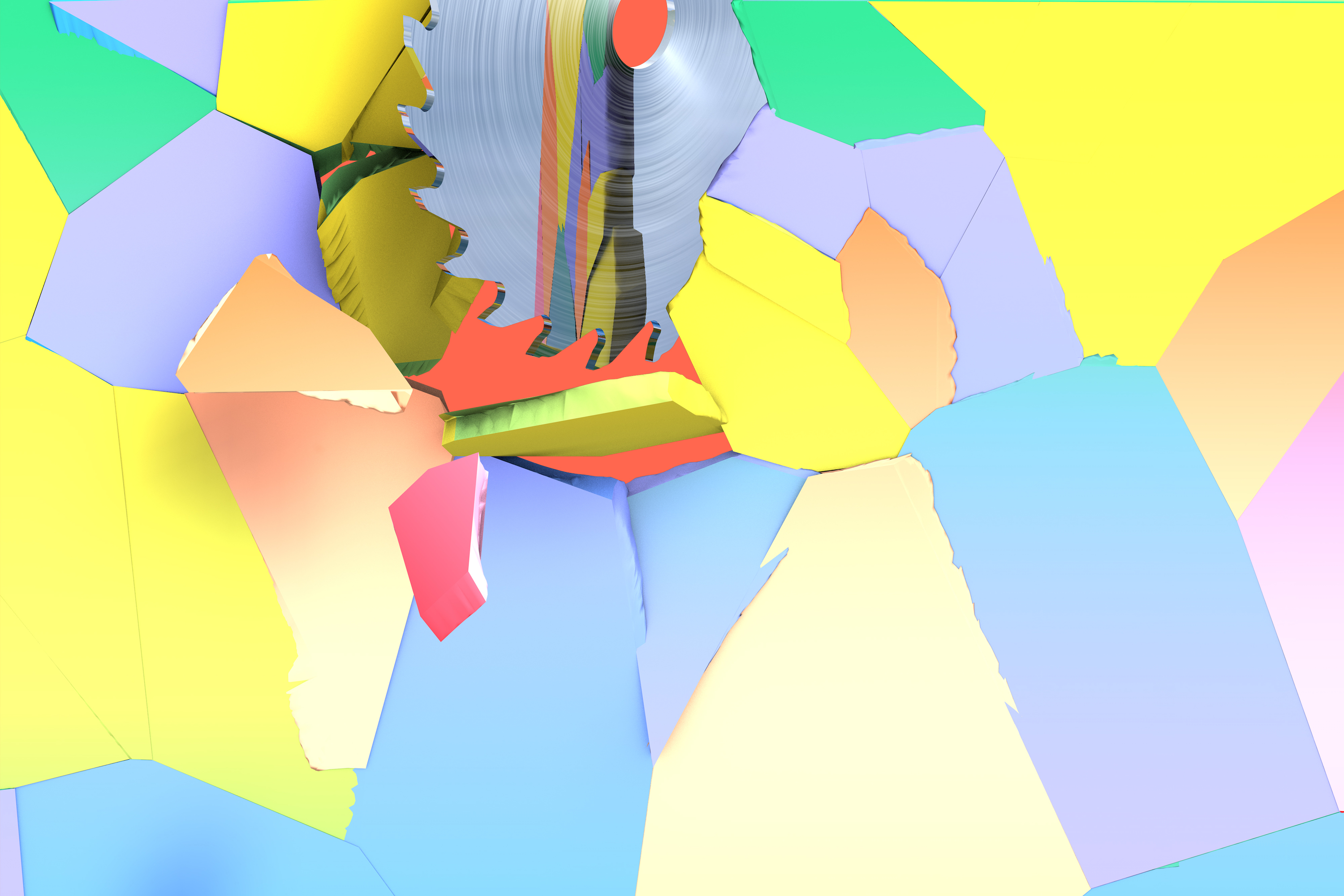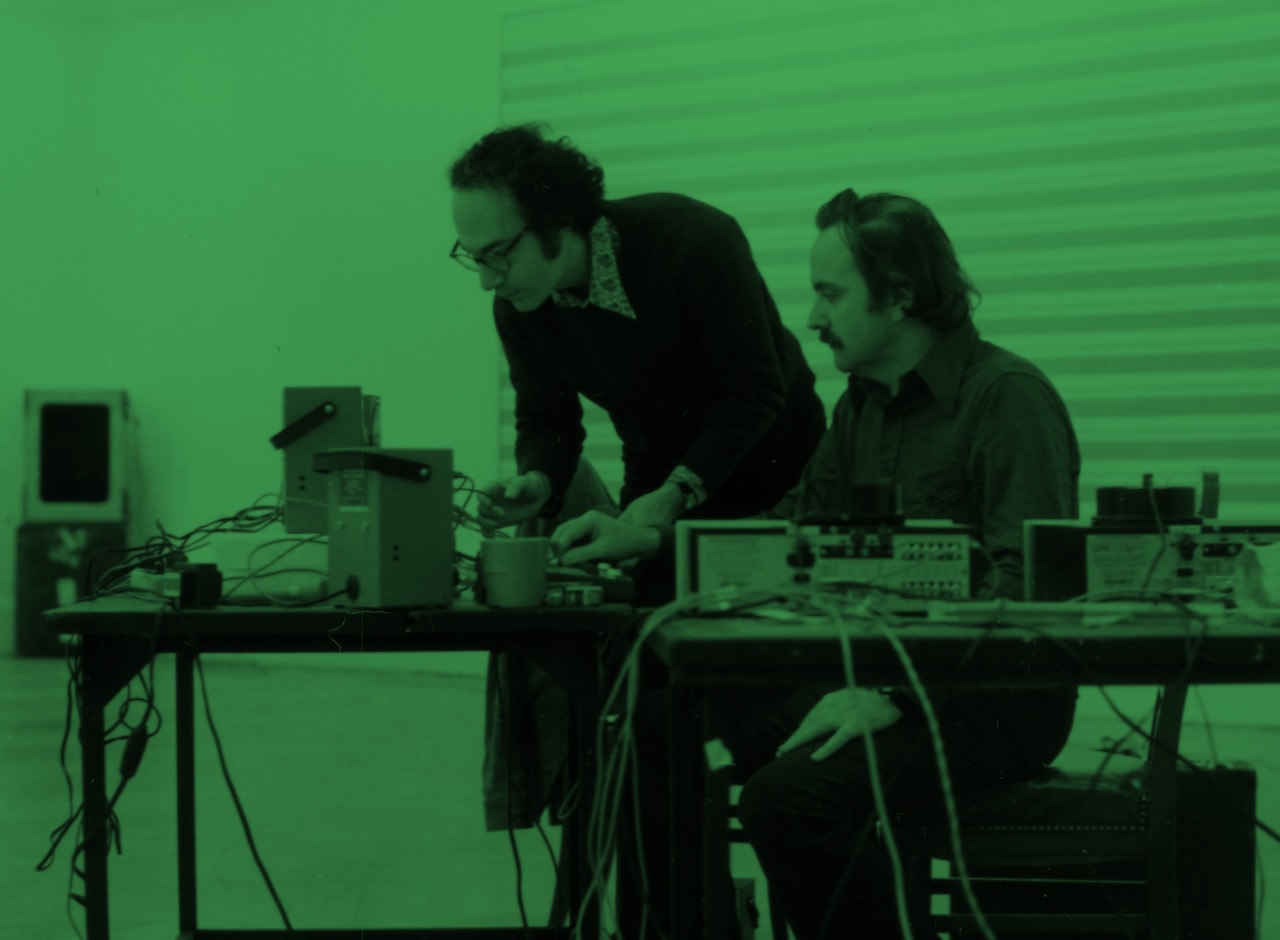
The Sonic Arts Union’s Handmade Electronic Music, 1966-1976
An in-depth history of the innovative instrument builders and composers that helped revolutionize live electronic music
Ann Arbor, Michigan in the mid-1960s is perhaps not the place one would expect the seeds of musical innovation to take root and sprout into one of the most interesting and unique electronic music collectives of the 20th century. But Ann Arbor is indeed where the story of the Sonic Arts Union begins, just a stone’s throw from two other hothouses of innovation: the Ford Motor Company’s production plant in Ypsilanti, and Motown Records’ Hitsville, U.S.A. in Detroit, dedicated to a different kind of production.
Formed in 1966 by composer/performers Robert Ashley, David Behrman, Alvin Lucier and Gordon Mumma, the Sonic Arts Union (SAU) became a lodestar for the American avant-garde. The genesis of the group came about in part from the intermedia explorations and collaborations of the Ann Arbor-based ONCE Group, but also resides within the broader historical timeframe of the 1960s, which gave rise to contemporaneous work by the likes of John Cage and David Tudor, the multi-disciplinary Fluxus art movement and the live electronic music group Musica Elettronica Viva, among others. Beginning their work in the era before the mass production of commercial electronic instruments and synthesizers, and before “DIY” existed in the way we now know it, the SAU used what little resources they had and taught themselves how to design and build circuitry, constructing custom instruments to realize groundbreaking compositions using cheap surplus components and a healthy helping of trial-and-error experimentation and ingenuity. Collaborating with other major figures of the 20th century avant-garde like Cage, Tudor, Pauline Oliveros, Anthony Braxton, Robert Rauschenberg and Merce Cunningham, the SAU were pioneers of live electronic music in the United States.
The SAU’s music was performed live with homemade or modified electronic instruments built from cast-off military and consumer circuitry.
In contrast to the many studio-based electronic works of the time, the SAU’s music was performed live with homemade or modified electronic instruments built from cast-off military and consumer circuitry, and scientific equipment repurposed for musical use. As pivotal members in a burgeoning scene of composers and electronic instrument builders active in the 1960s and 1970s, their invention and innovation exists both as part of the standard narrative of 20th century avant-garde musical practice, and as a separate, grassroots network of “solder-head” workbench outsiders, trading ideas, schematics and raw materials to create music from society’s technological detritus.
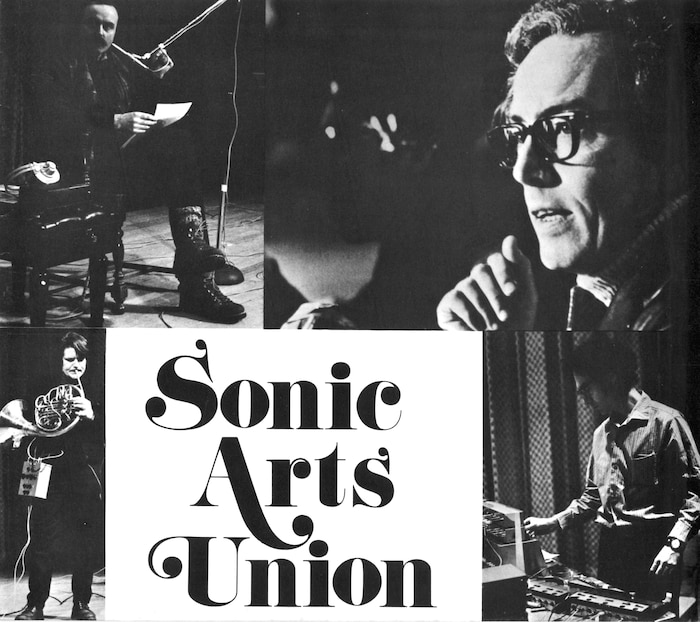
Beginnings
Beginning in the early 1960s, there was a surge in artist-initiated organizations, collectives, festivals and creative spaces in the United States and Europe that helped to nourish significant new work. Like-minded artists banded together to form performance groups, including the Gruppo di Improvisazione Nuova Consonanza and Musica Elettronica Viva in Rome, Zaj in Milan, AMM in Britain, the Association for the Advancement of Creative Musicians (AACM) in Chicago, Larry Austin’s New Music Ensemble and the San Francisco Tape Music Center in California, and innumerable others. Festivals of new music such as ONCE in Michigan and the annual Judson Theater Festival of the Avant-Garde in New York City introduced the public to a new generation of experimentalists, while artist-run concert venues and galleries bloomed and aesthetic and ideological trends coalesced into clusters such as the one we now know as Fluxus.
We made an electronic music studio with whatever stuff we could get together.
In the mid-1950s, Robert Ashley and Gordon Mumma met at the University of Michigan in Ann Arbor. Of the four primary SAU members, Mumma and Ashley were the first to begin working with electronic media. Through their work together in Milton Cohen’s sound and light Space Theatre project, the two began collaborating, eventually building the Cooperative Studio for Electronic Music in 1958. Ashley was a competent pianist, while Mumma was an excellent horn player, and this performance mentality manifested itself overtly in their approach to electronics. In the context of the Space Theatre, rather than having a synthesizer like many of the institutional studios, Ashley and Mumma built new equipment tailored for their specific needs in the course of composing, as Ashley has outlined: “We would decide that we needed a certain kind of equipment, and so Gordon would make it, or I would make it, or somebody would make it… It just seemed very natural for that kind of music to evolve through the availability of equipment.”
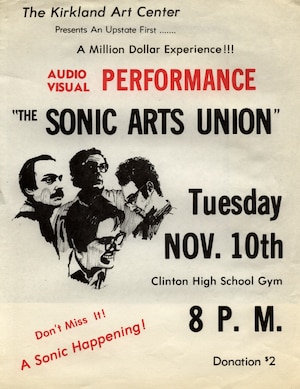
In 1958, Karlheinz Stockhausen came to the university to lecture and give a performance of his work, with Ashley assigned to be his host. Stockhausen spoke to the students about self-determination for the independent composer, which greatly moved both Ashley and Mumma and reinforced their own ideas for a new studio. Concerts and lectures by John Cage and David Tudor in 1960 were likewise revelatory for the two younger composers. In Ashley and Mumma’s view, one of the main reasons for delving into electronic music was the lack of access to ensembles that could perform their acoustic music. Through the studio, the two could create orchestral textures with limited means. As Ashley said in Cole Gagne and Tracey Caras’s book Soundpieces, “[We] made an electronic music studio with whatever stuff [we] could get together; in becoming a composer, that was the first thing I decided to do. And I designed my own personal studio in the direction of real-time music.”
The four composers were already beginning to connect prior to formalizing their collaboration under the SAU banner. One catalyst was a concert of the music of Earle Brown and Morton Feldman that took place at Town Hall in New York City on October 11th, 1963. Mumma and Ashley had driven out from Ann Arbor for the performance, and Lucier remembers coming down from Brandeis University, in his role as conductor of the Brandeis chamber chorus, to perform in the concert. Behrman was also in attendance – he and Lucier and had met earlier during their time in Europe, introduced by composer/pianist Frederic Rzewski. Another important moment of early connection were the legendary ONCE festivals in Ann Arbor, organized by Ashley, Mumma and the other members of the ONCE Group. Behrman and Lucier both performed at ONCE, alongside artists like John Cage, Eric Dolphy, Bob James and many others.
The quartet’s creative exchange moved quickly. Sometime in 1964, Mumma sent a series of letters to Behrman that were “a primer on how to build basic electronics.” Lucier for his part became convinced that “complex, serial, high-powered music just didn’t interest me at all,” as he related in his important 1995 Musiktexte tome Reflections, to the point that he actually stopped composing for a time. The turning point in his work was the 1965 composition Music for Solo Performer, which used electroencephalography (EEG) equipment and extremely amplified brain waves to resonate percussion instruments spread about a performance space. It was a harbinger of many more compositional innovations to come.
Forging the Union
The event considered by all four composers to be the real beginning of their work as the Sonic Arts Group, as they were first known, was when Lucier invited Ashley, Behrman and Mumma to perform at the Rose Art Museum at Brandeis University on April 22nd, 1966. According to Lucier, the pieces performed on the concert included Mumma’s Horn (1965) and Behrman’s Players with Circuits (1965). “It was a total disaster,” he says. “Nothing worked, you know!”
Despite that fact, Ashley remembered that “after the [Brandeis] concert we were talking and said, ‘Well, we should get together.’ I think it was Alvin and I mainly that were doing this… We just had the idea that if one of us got invited to someplace, we could offer the guy four composers instead of one composer… I think that was a successful part of it. Then we started doing a lot of concerts.”
“We liked each other, we like each other’s music, we liked the differences of each other’s music – and that phrase is fundamental,” says Mumma. “It was the fact that we were all very different, and doing interesting things, they different than what I was doing, different from what Ashley was doing, and all the rest of it.”
The foundation of the union was aesthetic connections, friendship and a mutual interest in each other’s work, but there were also practical reasons to band together. As Ashley recalled, “The ONCE Group pieces involved a lot of people – they were rather expensive by those standards, and so the idea of doing just a smaller piece that you’d have three people could help you with – because they knew about equipment and that kind of thing – was sort of interesting to me… In other words, I could do certain pieces that I wouldn’t necessarily think of as part of a solo concert.”
It also seems that the SAU initially hoped to create an even broader “union,” as outlined in a letter to David Tudor dated August 27th, 1966 and held in the Getty Archives, in which Gordon Mumma wrote: “I hope you see [David] Behrman in the next few weeks. He will tell you of what he has been doing while we were in Europe [for Mumma’s first Merce Cunningham tour]. He has made a group, called SAG, I think for Sonic Arts Group, and scheduled some Lincoln Center concerts… I saw Pauline [Oliveros] in NYC, at Behrman’s. She was on her way back to San Francisco. I think she is the SAG representative for the West Coast. Couldn’t be in better hands.”
Based on this letter, Behrman’s role in helping to create the Sonic Arts Union may have been greater than that shifting beast of memory recalls, and also that the original intention for the Union might have been broader in scope, encompassing other like-minded composers like Oliveros. Further evidence of this is a concert, likely organized by Behrman and Fluxus-identified intermedia artist/composer Ben Patterson, which took place at the Lincoln Center Performing Arts Library on November 7th, 1966. The concert was billed as the “Sonic Arts Group,” and included a performance of Lucier’s Music for Solo Performer as well as performances of works by Max Neuhaus, Takehisa Kosugi, Ben Patterson and Takahiko Iimura.
The Union had been forged, and their work together was underway. Between 1966 and 1976, the group performed at least 63 concerts as the SAU throughout the United States and Europe, in addition to the composers’ individual performances and, especially in the case of Behrman and Mumma, multiple international tours with the Merce Cunningham Dance Company. However, there was only one album they published together as the SAU: 1972’s Electric Sound, which was released on Mainstream Records and featured Lucier’s “Vespers” (1969), Ashley’s provocative “Purposeful Lady Slow Afternoon” (1971), Behrman’s “Runthrough” (1967) and Mumma’s “Hornpipe” (1967).
Pioneering Live Electronic Music
From the start, the SAU’s efforts were inextricably linked with a devotion to technology, albeit in non-traditional forms. The group’s efforts were born from a post-WWII American technoculture that presented a surplus of defective “throw-out” electronics, as well as new and emerging transistorized technologies, to any creative community bold enough to use them. Ashley, Behrman and Mumma in particular built a number of instruments with these available materials, employing self-taught techniques that were shared freely among colleagues. The recontextualization of equipment was also a hallmark of Alvin Lucier’s work, revealing identities through transparent re-presentation. Prizing the singularity of these objects and drawing out their personalities was a significant part of their musical practice, and one that was completed in live performances. The SAU’s use of indeterminate practices to realize their compositions would place their aesthetic on a spectrum somewhere between the traditional poles of open improvisation and through-composed composition.

This bricolage approach was both a result of necessity and an intentional choice. The group lacked access to a pool of performers interested in contemporary music, and economic limitations prohibited them from purchasing the early synthesizers that were housed in places like the Columbia-Princeton electronic music studio. “We had access to nothing,” Robert Ashley said. “It’s hard to explain now, because there are so many new music organizations that are made up of conventional instruments who… will play contemporary music, but in the 1960s, that situation simply did not exist, in any form. I mean, if you wrote a piece for flute, you’d be lucky to get a flute player to play it! So, electronics were available. There was a big push in the commercial world to sell reproduction equipment. They wanted to sell Frank Sinatra records, and so there were a lot of pioneers in that consumer electronic world who were making things available. You could buy them in the store, [things] that weren’t available, say, in the 1940s.” This consumer equipment was affordable and could be adapted to be as effective a tool as the special-purpose equipment that was only just beginning to become available at the time.
A methodology of limited means soon developed into an aesthetic position – an exploration of the limitations for their own distinct properties.
The surplus of materials actually gave the SAU access to a large amount of economically viable technical resources, albeit non-traditional resources that required significant labor and knowledge to transform into a musically useful form. This methodology of limited means, however, soon developed into an aesthetic position, an exploration of the limitations for their own distinct properties. As Gordon Mumma remembers, “I went to the military surplus stores, and bought leftover military stuff, which is part of the reason I was still making vacuum tube things later – because I could afford it! They were hot, they burned out, but the other part, and I think this is true of Behrman, also... we bought ‘defectives’ and ‘throw-outs.’ We got them at Canal Street in NYC, I got them from military surplus places in the Detroit and Ann Arbor area. We bought junk!”
The use of defective and throw-out circuitry as a foundation of their practice, though coming in part from the 1960s zeitgeist of incorporating indeterminacy into musical works, is just one way the SAU helped found an aesthetic derived from society’s technological outcasts. As a result, the group conceptually aligned themselves with visual art contemporaries like Jean Tinguely, Allan Kaprow and others who practiced assemblage – what Barbara Haskell in 1984 dubbed an “aesthetic of junk,” used as “a way of rescuing art from overly subjective and rarefied realms and bringing it back into contact with the ordinary and the ‘real.’”
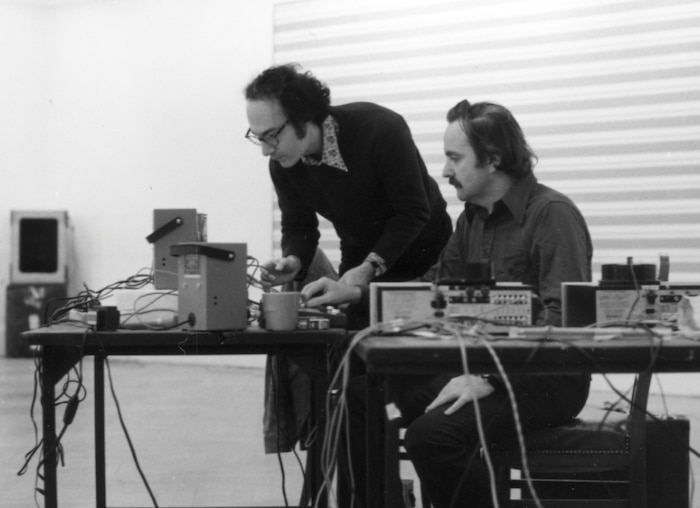
When commercial synthesizers began to become available, the SAU for the most part continued to use their self-made equipment, with the exception of a piece by Alvin Lucier, “Duke of York” (1971), that used an ARP 2600 synthesizer. Since they already knew how to build, use and maintain their equipment, it wouldn’t make much sense to spend the large sums needed to purchase an expensive synth. And as Lucier remembers, the decision to continue to use their own instruments had to do both with compositional functionality and the basic sounds they could wring from them: “The reason we liked to build our own equipment, at least David and Gordon, the sounds were better. They were more ‘into’ the electronics. They were related more to David Tudor. Why did we like David Tudor’s music more than Mario Davidovsky? They’re both good, but why do we? Because David Tudor goes right into the electronics, he understands what is in there, and if he doesn’t understand it, he’s exploring it, whereas the studio people are sort of ‘outside’ the sounds a little.”
The “inside” and “outside” descriptor employed here by Lucier ties into an analytical framework presented by sound artist Ron Kuivila in 1998 that uses a composer’s relationship to electronics and technology as a metaphor for their musical and compositional practice. The resultant music is not just a matter of developing sounds and putting them in some kind of order from the “outside,” without dealing with the internal technical dynamics of how the sound reaches the output stage: It is a sonic schematic of the relationship between the composer and their tools – their instruments. By being “inside” the electronics, both David Tudor and the SAU composers tracked the sound from its genesis in circuitry to its output from loudspeakers. They both shape the character and draw out the personalized characteristics of that particular conglomeration of electronic modules, following its signal path from electrical impulse to physical vibration.
We made electronic communities, if you will.
In many of these pieces, the time-based behavior of the electronics became “the score” of the works – Ashley’s 1971 “String Quartet Describing the Motions of Large Real Bodies,” for example, intermingles acoustic string instruments and chaotic live electronics, with radically different results in every performance. We also see this idea manifested in the unpredictable electronic feedback networks of Behrman’s “Runthrough” and Mumma’s “Hornpipe.” The latter used a “cybersonic console” Mumma designed which analyzes the performance space via impulses sent into the venue by his horn, eventually responding with electronic sound, characterized by manipulations of the acoustic properties of the space and the horn’s interaction with those physical properties.
The quirkiness and uniqueness built into the circuitry and component combinations Mumma and Behrman employed were part of their experimentalist approach to electronics, but also part of their artistic signature, as these individualized cast-off parts interacted with each other to create unexpected results. In addition to obvious concerns about portability – of paramount importance to a group of touring performers – Mumma and Behrman were especially interested in the compositional possibilities revealed as a result of hardware glitches the original components’ designers would have likely called defects. These “defects” were in fact prized in the materials SAU members put together, and were simply not possible with commercial synthesizers. The industrial and consumer context those instruments were created within required reproducibility and repetition, not the anarchic and mutating signal paths both built-in by the SAU inventors and produced naturally by the cast-off parts. Mumma recalls, “you can’t make repeatable things out of junk – which is the difference between Bob Moog and me, other than that he was smarter than I was, and much more sophisticated with electronic design than I was… But he was also building stuff for other people… For me, I could just experiment – if it didn’t work, I’d throw it away, try something else, OK, fine, we’ll use that, you know? I was essentially fooling around in a pantry of junk… David Behrman did a good bit of that also. We shared some basic designs of comb filters or oddly designed ring modulators, simple stuff like that, but what made them interesting was not what they were as individual things, but how we put them together in combinations – we made [electronic] ‘communities,’ if you will.”
How does one approach technology’s use – as a consumer or a producer? As an explorer or an entertainer?
Of course, the early synthesizers built by inventors like Don Buchla and Bob Moog weren’t vilified by the SAU, nor were they in actuality overly limiting. It’s just that they were built for a different purpose, and within a different context – although the initial cottage industry milieu those instrument designers worked in was in fact closer to the SAU’s position than many later corporations and institutional manufacturers. By the 1970s, Moog and Buchla synthesizers were largely built for an unknown audience of consumers and industry professionals, meant to be duplicable and earn a living for their designers. The success of most technologies, used for electronic music or otherwise, is typically defined by economic viability and mass acceptance. But in the case of the Sonic Arts Union’s inventions, they were for the most part never intended to be marketed at all – they were individual tools created for the specific context of realizing SAU compositions, rooted in the reinvention and recontextualization of these electronic components for previously unknown possibilities, unintended by their original designers.
Behrman’s critique of commercial synths, outlined in undated program notes for his piece Homemade Synthesizer Music with Sliding Pitches, focused on the repeatability and homogeneity of the mass-produced instruments, as well as his perception of their tendency toward commodification by mass culture: “[commercial music synthesizers] tend, when used alone, to produce sounds which are quickly used up by our culture (and become clichés). This is probably because they are designed as general-purpose, saleable packages adept at producing everything from TV commercial sound effects to imitation of conventional instruments.”
Mumma, in a 1997 article on the use of electronic music in the Cunningham Dance Company, tied the use of commercial synthesizers to a divide between “explorers” and “homogeneity”:
One reading of Mumma’s critique would be to see it as the classic avant-garde strategy of placing oneself in opposition to mass culture and commercialization, but his statement also describes the aesthetic implications of the artists’ relationship to technology. How does one approach its use – as a consumer or a producer? As an explorer or an entertainer? Will one use these electronic technologies as a mimetic device to sound like an acoustic instrument, or attempt to draw out the unusual possibilities inherent in the technology itself?
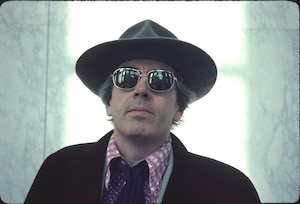
While the SAU was active as a unit for roughly only ten years (with reunion and/or retrospective events in 2004, 2012 and 2018), separating as they spread out both geographically and professionally into their individual creative lives, their impact on electronic music history continues to loom large, both for their pioneering work in live electronics, and as embodiments of early DIY culture in musical invention. Ashley passed away in 2014 at age 83, composing and premiering exciting new work until the end, but in mid-2018, Lucier, Mumma, and Behrman remain active as vibrant composers and performers into their 80s.
The creative impulses of the four composers are not limited to the Sonic Arts Union, the United States or any given generation. Instead, they spark a lively relationship to technology with an enormous community of converts that continues to grow. Witness the progeny of electronics tinkerer Reed Ghazala, who began experimenting with altered consumer electronics in the late 1960s as a young teenager, and later coined the term “circuit-bending.” Listen to and explore the music of groups like Konono No.1, who build and perform with wild, handmade instruments, or the work of former Lucier student and celebrated composer/performer Nicolas Collins, who builds custom hardware for his music and wrote a hardware hacking handbook, Handmade Electronic Music.
The SAU’s technical impulse to reuse and reformat also indirectly gave birth to music like chiptune in the past decade or so, built from the hacked hardware platform of 1990s-era Nintendo Gameboy portable game consoles and the 8-bit sound chips within them. The object as art and as music took on another layer of meaning in Tristan Perich’s 2007 debut album, 1-Bit Music, a hand-assembled integrated circuit programmed by the composer and glued to the inside of a CD case, with a headphone input so the listener could literally plug themselves into the music, which was generated in real time. Perich was also involved in the live circuit soldering ensemble Loud Objects, who have taken the concept of live electronic music the SAU pioneered to a processual extreme, constructing the electronic circuits for their music in real time in front of the audience.
These recent and emerging communities inhabit a much different technoscape than did the Sonic Arts Union, and as such communicate and present their work in a radically different manner. The physical/digital divide is just one example. With the SAU, it was their attendance of live events like the Earle Brown/Morton Feldman concert in 1963 that allowed the composers to connect. In many of the contemporary scenes, social networking websites such as Youtube, Facebook, Muffwiggler and others have become tactics that geographically and culturally diverse artists employ to share knowledge and work, often finding each other through keyword search terms and web posts rather than physical attendance of events. But no matter the method of connection, continuing contemporary explorations attest that the creative and inventive use of technology displayed historically by the Sonic Arts Union is alive, well and in capable hands.
Header image © Courtesy of Gordon Mumma
